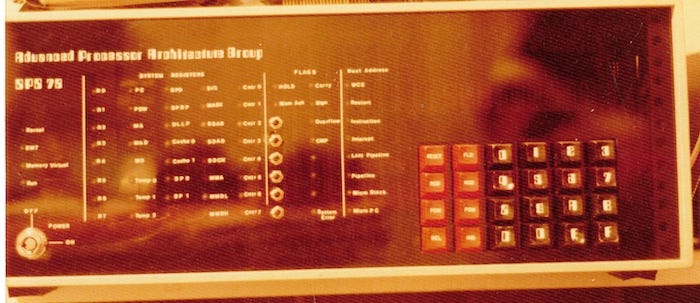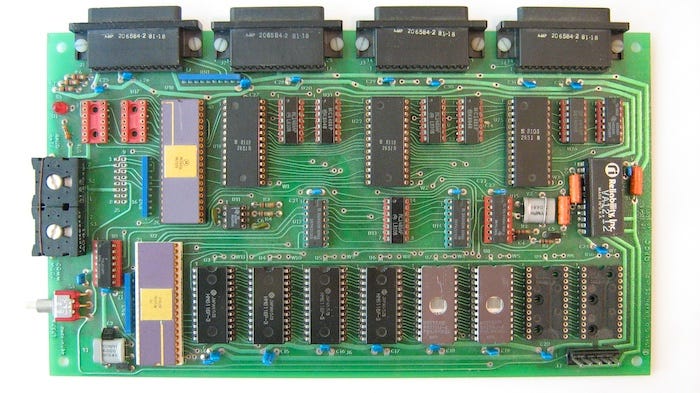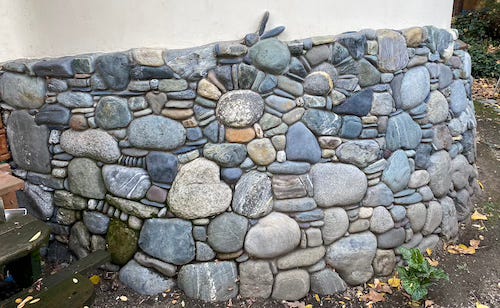For the glory of God.
The art that we create.
Today I want to talk about the art in the stuff we create.
One of my favorite works of art is Gian Lorenzo Bernini’s “Ratto di Proserpina.” The story is tragic, yet the art truly expresses human emotion. Look at the way the fingers leave impressions on the skin. It’s astonishing and inconceivable that this was carved from marble, and he created it at the age of 23!
I felt the same way when I visited the Galleria dell’Accademia in Florence. I sat and marveled at Michelangelo’s work, specifically the “Awakening Slave“. I almost imagined it exploding out of the marble that encased it.
I wonder what must have driven the artists to create such timeless works and whether we are tapping that inspiration in our work today. Let’s be clear: I am not comparing my examples in this article to Bernini’s or Michelangelo’s work in any way, but I suspect the inspiration is the same.
I often wonder what motivates us to create beautiful art that runs the world’s gears. Some of it is software, some hardware, but unlike marble, the stuff we create today is often very ephemeral. As such, many of these masterpieces of creation either rotted away in the junkyard or disappeared in some corporate vault just a few years after they were shipped.
Let me offer some more modern examples:
The PDP 11/70 front panel from Digital Equipment Corporation.
I find this one of the most interesting pieces of industrial art I have ever had the pleasure to work with. Introduced around 1975, the lettering, silk screen, and even the switch’s choice of color and form certainly reflect the time’s particular “mod” aspect.
It was not my first computer; I had already had some experience with an IBM 1130 computer early in high school, but when I first saw one, I was positively smitten—not only with its physical form but also with its internal design. I spent countless hours in high school poring over the engineering drawings, trying to learn as much as possible from the geniuses who created this masterpiece. This was probably the reason I decided to study computer engineering.
Sadly, many of these ended up on the scrap heap. The few that remain fetch thousands of dollars from collectors on eBay.
The Apple Calendar app
In one of my articles about “Leaving the Apple Ecosystem,” I mentioned the Apple Calendar app. I wrote that I wasn’t a big fan of the user experience in the Proton calendar. I have also looked at so many other alternative apps, but none of them come close to the polish and aesthetics of the Apple app.
I consider Apple Calendar a masterpiece of user experience. It is easy on the eyes yet conveys a vast wealth of information in one view. The experience easily translates from desktop to mobile.
Apple Calendar (iCal) was created by the outstanding French software artist Jean-Marie Hullot during Steve Jobs’s time at Apple. Both men clearly understood the value of creating something beautiful. The iPhone and Mac were stark contrasts to the brutalist designs of the PC’s of the time.
Transitioning from Apple Calendar to other apps feels akin to comparing contemporary perfumes, which all remind me of dryer sheets, to a timeless fragrance like Robert Piguet Bandit.
We could do well as an industry to relearn these skills.
Some of my own work
I started building homebrew computers around 1975. By the time I graduated from high school, I stumbled upon making a few creations of my own, including a crazy p-code machine that I was trying to get Pascal to run. The PDP-11 influenced part of my aesthetic, and looking back at my font selection, so did the art at the time.
I have no clue what happened to the hardware after I went to college.
One of my first engineering jobs involved designing embedded computers. This device converted serial ASCII data to a format that could drive an electronic typesetting machine.
I designed and even created the PC layout (with tape strips). I still remember being obsessed with the aesthetics of the board’s physical and electrical design and software flexibility. Even the colors of the parts mattered to me. This was art, but invisible art. No one should ever see this; it should just work magic behind the scenes.
It solved a problem that completely vanished from existence within a year after introducing the Apple Laser printer and PostScript.
Duff’s device
Even the software we never see matters, the stuff behind the scenes.
Here is a crazy piece of art that only a true geek (artist) would understand. In the early 1980s, Tom Duff worked at Lucasfilm and was tasked with performing the breakthrough special effects animation tasks with the limited hardware of the time. He wrote an optimization trick that significantly sped up pixel copying by manually implementing loop unrolling using a switch statement and a do-while loop.
This method is known as Duff’s device. It requires a language that gives the programmer exceptional design control, like C, and would most likely make most modern CS professors’ heads explode.
I doubt very few have heard of it, nor would they appreciate it.
This also got me thinking about another invisible work that faded from existence. I used to work for PGP Inc., later PGP Corporation—the folks who created the encryption technology used by Proton today. There was a team of incredibly talented engineers: Derek Atkins, Will Price, Hal Finney, Andrey Jivsov, and many others with whom I had the honor and privilege to work. The code they produced, especially the PGPsdk, was a work of art. They built some of “the gears that drove the world.” PGP eventually sold to the bellicose hands of Symantec—“where software goes to die.”
Western Electric Model 500 telephone
My last example was the ubiquitous Western Electric Model 500 telephone, a staple in America from 1950 until the 1984 Bell breakup. The design team, led by Henry Dreyfuss, measured over two thousand human faces to calculate the handset design by determining the average distance between the mouth and the ear.
Its internal electronics were also a marvel of the time. It had to provide clear and reliable communications in almost any condition imaginable. Yet, today, I am sure we have generations who have no clue what this device is or even how to operate it.
Apollo Guidance Computer
I have said too much already, but I couldn’t end this article without mentioning what I consider the pivotal work of the 20th century: Hal Laning’s code in the Apollo Guidance Computer. At least someone archived the code.
People don’t appreciate the substance of things
— Jubal Early Firefly: “Objects In Space”
Architecture Shapes Us
I am building a house and have been thinking a lot about architecture lately. I am inspired by the incredible and often whimsical gems hidden from view. They exist, but you have to seek them out.
I was moved by Justin Shubow, president of the National Civic Art Society, on the history of classical architecture:
(I encourage you to take a few minutes and listen to this Podcast about the importance of classical architecture)
We shape our buildings, and afterwards our buildings shape us.
—Winston Churchill
We need to stop creating the shit that passes for architecture since the 60s. That said, I am hopeful and grateful that President Trump signed the Executive Order Promoting Beautiful Federal Civic Architecture.
Why do we create?
Although they are notable works of art, unlike the marble, many of these examples has been forgotten in the dust. But they all share the inspiration and passion of the artists who created them. They all touched people and made a difference in their own way.
Maybe we create things to offset our feelings of mortality. But given the short lives of some of our inventions, I have come to believe we do it for something more profound in our soul—the need to make beauty.
So whether you eat or drink or whatever you do, do it all to the glory of God.
— 1 Corinthians 10:31











Why are public art projects often so ugly?
Well, a key factor is how they’re funded.
Committees inevitably select terrible art.
But masterpieces like the works of Raphael and Michelangelo were funded by individual egos.
Here’s why it matters…🧵
https://x.com/thinkingwest/status/1920109211125448828?s=61
About the that Apollo computer
https://youtu.be/xx7Lfh5SKUQ